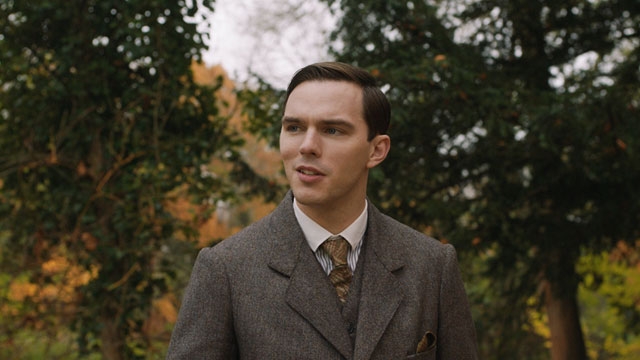
Most biopics possess the adept capability of glamorizing one of the best attributes of a real-life individual or state of affairs, whereas concurrently sweeping their worst traits below the rug. Tolkien, directed by Dome Karukoski (Tom of Finland), treads a lot the identical path. The mere try at rendering the sum-total lifetime of author J. R. R. Tolkien is digestible for an viewers. It goes down the hatch with ease. Yet the movie additionally tantalizes the identical viewers with grand questions concerning the objective of artwork, love, and friendship throughout treacherous occasions. The foundation for our love of tales akin to The Hobbit and Lord of the Rings is someplace within the bones of Tolkien.
Bright newcomer Harry Gilby and the proficient Nicholas Hoult are heart-wrenching of their portrayal of Tolkien from penniless wretch to ward of a church. One second his mom (Laura Donnelly) is performing a dramatic studying – stoking the inspiration behind Tolkien’s aptitude for story – and the following, she’s lifeless in a chair.
These grim juxtapositions are the cornerstone of telling Tolkien’s life story. The biopic is mainly inquisitive about his friendship with three different boys and their institution of the Tea Club Barrovian Society as they mature from adolescence to maturity. Weaved inside that framework are ugly photographs from the Battle of the Somme throughout World War I as Tolkien searches desperately for his pal Geoffrey (Anthony Boyle). The movie ham-fists these conflict moments, virtually to the purpose of absurdity. He actually plunges head-first into mustard gasoline and incoming fireplace on the frontline with neither weapon nor plan to have interaction the enemy. While he’s kissing Edith (Lily Collins), we’re instantly transported to Tolkien whereas he’s mendacity in a pool of blood surrounded by piles of lifeless our bodies. Various scenes proceed this theme, vividly evaluating Tolkien’s good occasions and his unhealthy.
Nuance is urgently wanted on this movie. Intense tonal and thematic breaks on this movie are extra like an iron hammer hitting you upside the top as an alternative of the mandatory invisible hand guiding you to an thought. Though the depiction within the movie is usually banal, it nonetheless works to incorporate how Tolkien embraced artwork as a option to conceptualize life. The outdated adage “art imitates life” springs to thoughts. But for Tolkien, it appears extra acceptable to say, “Art is life.” Tolkien and his buddies, even at their tender ages and whereas working in numerous mediums (portray, music, poetry, writing), discovered solace and which means of their shared must translate the soul into one thing tangible. The filmmakers deserve some credit score for no less than making an attempt to provide its one feminine character in Edith an opportunity to additionally specific her creative needs – even when it involves a full-stop there. Collins does extra together with her scant character than one may anticipate.
Even although the movie lambastes us with terrifying conflict photographs, it concurrently leads us to query how artwork serves a objective even within the hellish carnage of conflict. Maybe the straightforward reply is a method of escaping. But extra importantly, tales enable us to see past our particular person selves and provides us fantastical hope. That is J. R. R. Tolkien’s legacy and what he confirmed the world together with his books, and what the filmmakers tried to painting on this movie. Though the latter is much less stirring, it’s nonetheless a narrative worthy to expertise.
Source


